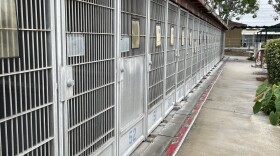The planned expansion of the San Diego Convention Center will include almost one million additional square feet of space and cost half a billion dollars. It will have more room for meetings, exhibitions, a ballroom and retail outlets. The people who pushed for the larger venue believe it will lure major conventions to San Diego.
But all of this may be irrelevant.
The expanded version of the Convention Center could be inundated with seawater by mid century if climate change predictions are accurate.
“Your mother told you to hope for the best and plan for the worst,” said San Diego Port Commissioner Scott Peters. He was referring to maps making the rounds at the agency that show sea levels climbing anywhere between 18 inches to 4 feet along the tideline by 2050. “Look, if we’re going to make an investment like this on our waterfront, we need to be ready for sea level rise.”
But the comments by Peters, who appears headed for Congress, are contradicted by the Port’s own official position that seems to give the agency an out.
The Port’s environmental impact report was based on sea level data available as of December 2010. That’s when the notice to prepare the report was issued. At that time, state information showed the Convention Center expansion above sea level. The maps showing it underwater were done in 2011.
Also, the port has stated that by law an environmental report “is not required to consider the impacts of future environmental conditions, such as sea level rise, on a proposed project.”
Yet, Port Commissioner Dan Malcolm said the sea level rise maps are being considered for another project -- the 556 acre development for Chula Vista’s shoreline along San Diego Bay.
“Various environmental stakeholders looked at the maps, determined that these draft maps were substantially different than the inundation maps that were done for the Chula Vista Bayfront Masterplan previously several years ago. Based upon that determination They required some changes be made to the last minute.”

He said the changes included additional monitoring of sea levels and some future remedial actions based on the results of that monitoring.
Malcolm said he’s frustrated that that the sea level rise maps for Chula Vista are being taken into account before the port’s full commission has examined them and concluded the science is valid.
“Healthy skepticism in science is a good thing,” Malcolm said. “On the Internet there are thousands and thousands of articles that global warming is real, that global warming is not real, that the sea level is going to rise that it’s not going to rise, that it’s going to be absolute disaster that it isn’t going to be disaster.”
The maps, predicting sea level rise for waterfront development, were prepared by San Diego port contractor Environ using research data from local scientists including Daniel Cayan of the Scripps Institution of Oceanography and Richard Gersberg of San Diego State University.
The port considers the maps tentative because they haven't been adopted by the commissioners. Malcolm said he’s been assured by port officials the maps will go before the full commission for discussion. If commissioners accept the maps, he believes there will be little choice but to change course.
“It is incumbent on the port district to then require developers, impacted property owners and ourselves as a district to begin mitigation measures, sea walls, disallowing development in areas that are shown impacted by sea level rise,” Malcolm said. “If this is science, how we can we allow a development to occur where we’re showing there is going to be sea level rise inundation? It doesn’t make any logical sense.”
Allowing the development anyway could require massive protection measures with a huge price tag.
“We can’t even wrap I think our minds around the amount of capital investment that’s going to be required over the next 25, 50 years and 100 years to address this concern,” said Port Commissioner Lee Burdick, who is chair of the environmental advisory committee and climate action plan working group.
She said the extent of potential flood risk along the tideline is alarming far beyond the convention center project if public agencies do nothing
“Clearly the South Bay, Chula Vista, Imperial Beach, the Silver Strand and Coronado are particularly vulnerable,” Burdick said. “In the City of San Diego, we are vulnerable along Harbor Island and the airport if you look at La Guardia airport, which is very close to the water tideline in New York, it was a lake after Superstorm Sandy. And we certainly want to protect San Diego’s important regional transportation assets from suffering that.”
Despite knowing the convention center expansion could be underwater in 2050, the port commission voted unanimously in September to move forward using the old data.
Meanwhile, commissioners decided this week to hold a retreat on how to handle climate change.






